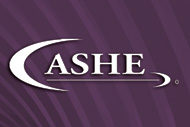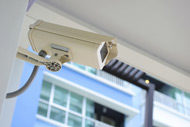When we enter the doors of our facilities each day, we never know what challenge or issue will await us. But one thing is certain: We have to be ready to respond and make sure our facilities are operational — there are lives that depend on us.
We are truly the keepers of the health care physical environment and all eyes look to us to provide safe, high-quality patient care environments. This is an awesome responsibility and one that I know none of us takes lightly.
I know from conversations with many of you that facility management is our calling, and we are committed to do whatever it takes to optimize the environments in which quality health care is delivered.
Our health care facilities are open 24/7 and our departments' role is critical in keeping the doors of our facilities open to meet the needs of our communities. We are charged with keeping the physical environment operational in terms of patient, visitor and staff safety; and efficiencies and effectiveness.
This is not a job that can be done alone. We need the support of other health care professionals within our facilities, we need to be informed and knowledgeable about the internal and external forces that affect our work daily, and we need the support of our peers and colleagues as we continue to look for ways to work smarter.
It was with these thoughts in mind that the 2011 Annual Conference Planning Task Force came together to identify the content for the July 17-20 meeting. Representing a variety of disciplines and organizations, the task force members were united in their goal of providing you with a premier educational experience that offers tools and resources you need today in terms of the following:
Information. Giving you what you need to prepare for the future;
Innovation. Helping you look for new ways to meet the challenges you face; and
Interaction. Connecting you to your peers and colleagues and strengthening your bond to the ASHE family.
The city of Seattle provides the perfect backdrop for this year's conference. I hope you take the time to have the complete ASHE Annual Conference experience. See the regal Mt. Rainier, the highest peak in Washington; and walk the Port of Seattle and enjoy Puget Sound. Hear the city's diverse music, taste its coffee and see how it is working to reach zero net per capita greenhouse gas emissions by 2030.
Take a few minutes to log on to www.ashe.org/annual and review the conference brochure. I know you will see that this is an event you truly need to attend.
If you need help formulating your request to attend the Annual Conference, please review the Justification Toolkit that's also posted on the website. The information posted there was developed to help you communicate the value of attending the conference when you request funding for your registration and travel. With this expert advice, preconference justification documents, and post-conference reporting templates, your supervisor will appreciate the investment made in your training and development and its contribution to your facility's success.
This month's column was written by ASHE President George A. (Skip) Smith, CHFM, SASHE, vice president, facility management, Catholic Health Initiatives, Hilliard, Ohio.
ASHE Insight
Resources available
ASHE offers a number of valuable resources at special prices to professionals in the health care industry.
They include the following:
- Health Facility Commissioning Guidelines. Written by health care professionals, this resource helps optimize construction or renovation delivery. It enables project teams to deliver cost-effective and efficient health care facilities that yield the desired return on investment. The guidelines can help ensure a sucÂcessful transition from construction completion to a sustainable, high-performance operation.
- Guidelines for Design and Construction of Health Care Facilities. The 2010 guidelines cover minimum program, space and design needs for all clinical and support areas of hospitals, nursing facilities, freestanding psychiatric facilities, outpatient and rehabilitation facilities, and long-term care facilities. It also includes new material on acoustics, patient handling and movement, patient safety, bariatric patient care, cancer treatment and emergency services.
For information on purchasing either of these valuable references, click here.





